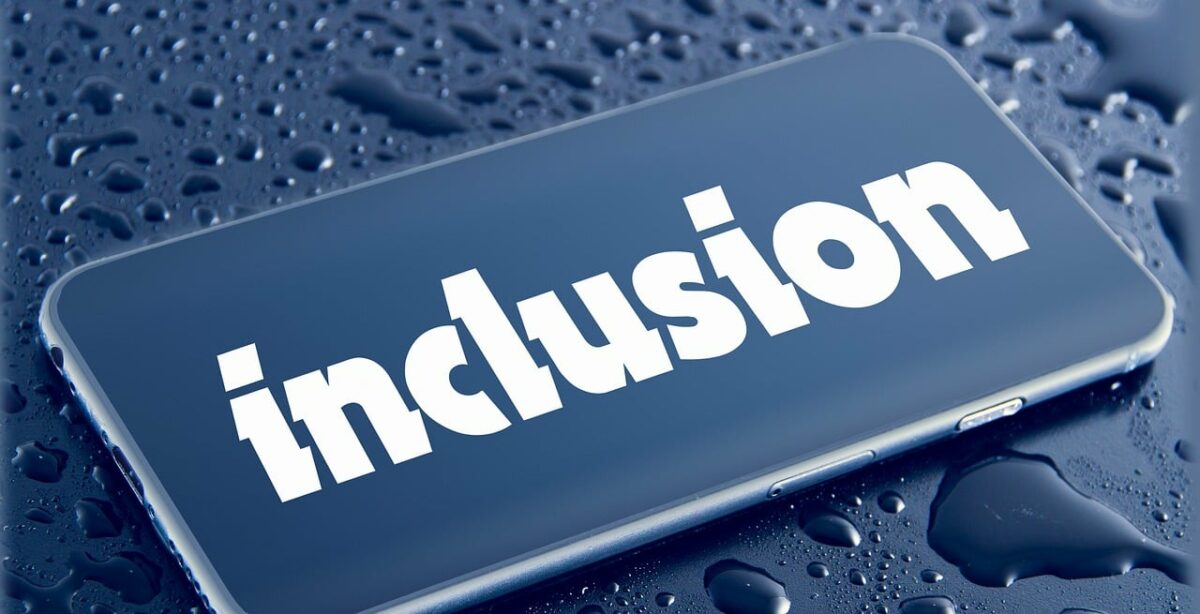What Are Job Responsibilities?

Job responsibilities are a vital element in any job description and an essential element in finding, not just the best candidates, but the ideal candidate, for a specific position. It clarifies the role’s goals, what the employee is responsible for in a typical day, and highlights the shape and skill set that good candidates will likely take. For potential employers, it helps them hire the right person. For a prospective employee, it gives a clear understanding of daily duties and job requirements, allowing for self-determination of an employer-employee match, well before the job interview process begins.
In this article on choosing the role’s responsibilities to include in a job description, we explore:
- Why are job descriptions crucial in job postings?
- How to list job responsibilities in a job description
- Where can I find job duties and job responsibilities examples?
- How to create effective job descriptions
Why Are Job Descriptions Crucial In Job Postings?

Job descriptions are crucial in job postings as they provide essential information about the position, its requirements, and responsibilities. Here are a few reasons why job descriptions are crucial in job postings:
- Attracting the Right Candidates: Job descriptions act as a marketing tool to attract potential candidates. By clearly outlining the job title, key responsibilities, and qualifications, organisations can attract individuals who possess the specific skills and experience needed for the role. A well-crafted job description helps in targeting the right audience and increasing the chances of attracting qualified applicants, with both parties on the same page.
- Setting Expectations: Job descriptions help set clear expectations for both the organisation and the candidates. They provide a comprehensive overview of the position’s job duties, responsibilities, and reporting structure. Candidates can assess whether they have the necessary skills and qualifications for the job, while a Hiring Manager can evaluate whether candidates align with their requirements and company goals. Setting accurate expectations from the beginning contributes to a more efficient hiring process and reduces the likelihood of mismatches later on.
- Streamlining the Selection Process: Job descriptions play a vital role in streamlining the selection process. By outlining the key qualifications and requirements, businesses can screen CVs and applications more effectively. Hiring Managers can easily compare candidates’ qualifications against the job description, saving time and effort in the initial stages of recruitment. Clear job descriptions also help in conducting structured interviews by providing a reference point for evaluating candidates’ skills and experiences.
- Compliance and Legal Considerations: Job descriptions help employers comply with legal and regulatory requirements. They ensure that job postings are free from discriminatory language and meet the standards of equal employment opportunities. Additionally, job descriptions can serve as a reference point in case of legal disputes or when determining essential job functions that might require reasonable accommodations.
- Performance Evaluation and Development: Job descriptions provide a foundation for performance evaluation and development. By clearly outlining job responsibilities and expectations, organisations can objectively assess employees’ performance and provide feedback. Job descriptions also help in identifying areas for growth and development, as they outline the skills and education necessary for success in the role. This information can be utilised in performance management, training, and career progression discussions.
In summary, job descriptions are crucial in job postings as they attract suitable candidates, set clear expectations, streamline the selection process, ensure compliance, and provide a basis for performance evaluation and development. A well-written job description serves as a valuable tool for both organisations and candidates, facilitating a more efficient and effective recruitment process.
How To List Job Responsibilities In A Job Description
Here are four tips on how a Hiring Manager, company, or employer can prepare job responsibilities and day-to-day duties for existing and new job roles:
1. Inform And Engage Job Seekers With A Job Title And Job Summary
Providing a clear and engaging job title and job summary is crucial when listing job responsibilities. A well-crafted job title should accurately represent the role and catch the attention of potential candidates. It should be concise, specific, and reflect the nature of the position. The job summary, on the other hand, should provide a brief overview of the key responsibilities, enticing job seekers to read further. It serves as a snapshot of the role, highlighting the most important aspects and piquing the interest of qualified candidates.
2. Create Or Curate Current Job Responsibilities
When listing job responsibilities, it is important to ensure that they are up to date and relevant to the current needs of the organisation. Job responsibilities may evolve over time due to changes in technology, industry trends, or business priorities. Therefore, it is essential to review and update the list regularly to accurately reflect the current expectations of the role. This ensures that job seekers are provided with accurate and realistic information about what the position entails.
3. Prioritise Key Responsibilities Listed
In a list of job responsibilities, it is crucial to prioritise the most important and impactful duties. Highlighting the key responsibilities helps job seekers understand the core functions of the role and enables them to assess their own suitability. By clearly indicating the primary tasks and outcomes expected from the position, you can attract candidates who possess the necessary skills and experience. Prioritisation also helps job seekers gauge the level of responsibility and the potential impact their work may have within the company.
4. Shorten Your List Of Job Responsibilities For Your Job Listing
When creating a job listing, it is important to keep the list of job responsibilities concise and focused. A lengthy list of responsibilities can be overwhelming for job seekers and may deter them from applying. Instead, aim to provide a condensed version of the key duties that captures the essence of the role. This allows job seekers to quickly grasp the primary responsibilities without getting lost in unnecessary details. A shorter list also helps to maintain the readability and clarity of the job listing, making it more attractive and accessible to potential candidates.
Where Can I Find Job Duties And Job Responsibilities Examples?
Whether you are hiring a Customer Service Representative, Administrative Support, Sales Manager, Marketing Manager, Project Manager, Executive Position, or entire team, it helps to have some guidance and examples of what to include in a job specification.
You can find job responsibilities examples for any job role in the job descriptions contained in our job description library. Examples include our Service Manager Job Description Template and Ecologist Job Description Template. You can use these with a blank or sample job description template or job advert template to attract new hires internally or externally, through job board advertising.
Find your job responsibilities examples in the following categories:
- Accounting Job Responsibilities
- Agriculture Job Responsibilities
- Analyst Job Responsibilities
- Armed Forces Job Responsibilities
- Arts Job Responsibilities
- Automotive Job Responsibilities
- Banking and Insurance Job Responsibilities
- Bar and Restaurant Job Responsibilities
- Charity Job Responsibilities
- Construction Job Responsibilities
- Customer Services Job Responsibilities
- Education Job Responsibilities
- Engineering Job Responsibilities
- Facilities Management Job Responsibilities
- Finance Job Responsibilities
- Healthcare Job Responsibilities
- Hospitality and Leisure Job Responsibilities
- Human Resources (HR) Job Responsibilities
- Information Technology (IT) Job Responsibilities
- Leadership Job Responsibilities
- Legal Job Responsibilities
- Management Job Responsibilities
- Manufacturing Job Responsibilities
- Marketing Job Responsibilities
- Media Job Responsibilities
- Nurse Job Responsibilities
- Office Administration Job Responsibilities
- Personal Care Job Responsibilities
- Professional Services Job Responsibilities
- Project Manager Job Responsibilities
- Public Sector Job Responsibilities
- Religious Worker Job Responsibilities
- Retail Job Responsibilities
- Sales Job Responsibilities
- Science Job Responsibilities
- Social Care Job Responsibilities
- Teacher Job Responsibilities
- Telecommunications Job Responsibilities
- Transportation and Logistics Job Responsibilities
How To Create Effective Job Descriptions

Here are three tips on how Hiring Managers can transform their mundane JDs into engaging job descriptions that captive potential candidates:
1. Infuse Your Company Brand
Infusing your company brand into job descriptions helps to create a consistent and attractive employer image. By incorporating elements of your company’s values, culture, and mission, you can showcase your company’s unique identity and differentiate it from competitors. Job seekers who resonate with your company brand are more likely to be motivated and engaged employees. Infusing your company brand in job descriptions also helps to attract candidates who align with your organisational values and are more likely to contribute positively to your company’s growth and success.
2. But Keep Jargon For Internal Candidates
While it is important to showcase your company’s brand, it is equally crucial to ensure that job descriptions are easily understandable, especially for external candidates. Avoiding excessive jargon and technical terms helps to make job descriptions more inclusive and accessible to a wider pool of potential applicants. Using clear and concise language allows candidates to quickly grasp the requirements of the role and determine their fit. However, for internal candidates who are familiar with your company’s terminology and processes, including relevant jargon can provide a more accurate representation of the role and its responsibilities.
3. Focus On Perks And Benefits To Attract Better Candidates
Highlighting perks and benefits in job descriptions is essential for attracting top-quality candidates. Job seekers are not only interested in the core responsibilities but also the overall compensation package and work environment. By clearly outlining the perks and benefits, such as flexible working hours, professional development opportunities, healthcare benefits, or a competitive salary, you can entice candidates who value these offerings. Emphasising attractive perks and benefits helps to make your job postings more appealing, increasing the likelihood of attracting high-caliber candidates who are seeking a well-rounded employment experience.
JOB RESPONSIBILITIES FOR JOB DESCRIPTIONS FAQs
Next, we provide the answers to your questions on creating or selecting job responsibilities for your job descriptions.
Job responsibilities refer to the specific tasks, duties, and functions that an individual is expected to perform as part of their role within an organisation. These responsibilities are outlined in job descriptions and serve as guidelines for employees to understand what is expected of them in their positions. Job responsibilities can vary depending on the nature of the job and the organisation but typically include activities such as project management, customer service, financial analysis, marketing, and more.
Job responsibilities play a crucial role in the smooth functioning of a business for several reasons:
– Clarity and Focus: Defining job responsibilities helps employees understand what they need to do and focus on their specific areas of work. This clarity minimises confusion, enhances productivity, and ensures that tasks are completed efficiently.
– Accountability: By clearly outlining job responsibilities, organisations establish a framework for holding employees accountable for their performance. Employees are aware of their role-related expectations, making it easier to assess their work and provide feedback.
– Collaboration and Coordination: When everyone understands their responsibilities, it becomes easier to collaborate and coordinate with colleagues. Clear roles minimise overlaps, foster teamwork, and improve communication among team members.
– Performance Management: Job responsibilities serve as a basis for evaluating employee performance. By aligning individual responsibilities with organisational goals, it becomes possible to assess how well an employee is meeting their targets and contributing to the overall success of the organisation.
– Legal Compliance: Defining job responsibilities can help ensure that employees adhere to legal and ethical standards within their roles. It helps employers establish guidelines, policies, and procedures that comply with relevant laws and regulations.
Defining roles and responsibilities within an organisation requires a thoughtful approach to ensure clarity and alignment. Here are some steps to help you get started:
– Job Analysis: Conduct a thorough job analysis to understand the tasks, skills, and knowledge required for each role. Identify the key functions and responsibilities associated with each position.
– Job Descriptions: Create comprehensive job descriptions that clearly outline the roles, responsibilities, and expectations for each position. Include information about reporting lines, interactions with other departments, and any specific requirements.
– Consultation: Involve relevant stakeholders, such as employees, managers, and Human Resources, in the process. Seek their input and insights to ensure that the defined responsibilities accurately reflect the needs of the company and the expectations of the employees.
– Documentation: Document the roles and responsibilities in a structured format, such as an organisational chart or a manual. Make sure the information is easily accessible to all employees.
– Communication and Training: Clearly communicate the defined roles and responsibilities to all employees. Conduct training sessions or orientation programs to ensure that employees understand their roles and how they fit within the larger organisational structure.
– Periodic Review: Regularly review and update the roles and responsibilities as the organisation evolves. Seek feedback from employees and managers to identify any gaps or changes needed to improve efficiency and effectiveness.
Remember, defining roles and responsibilities is an ongoing process that requires continuous monitoring and adjustment to align with the changing needs of the company.



